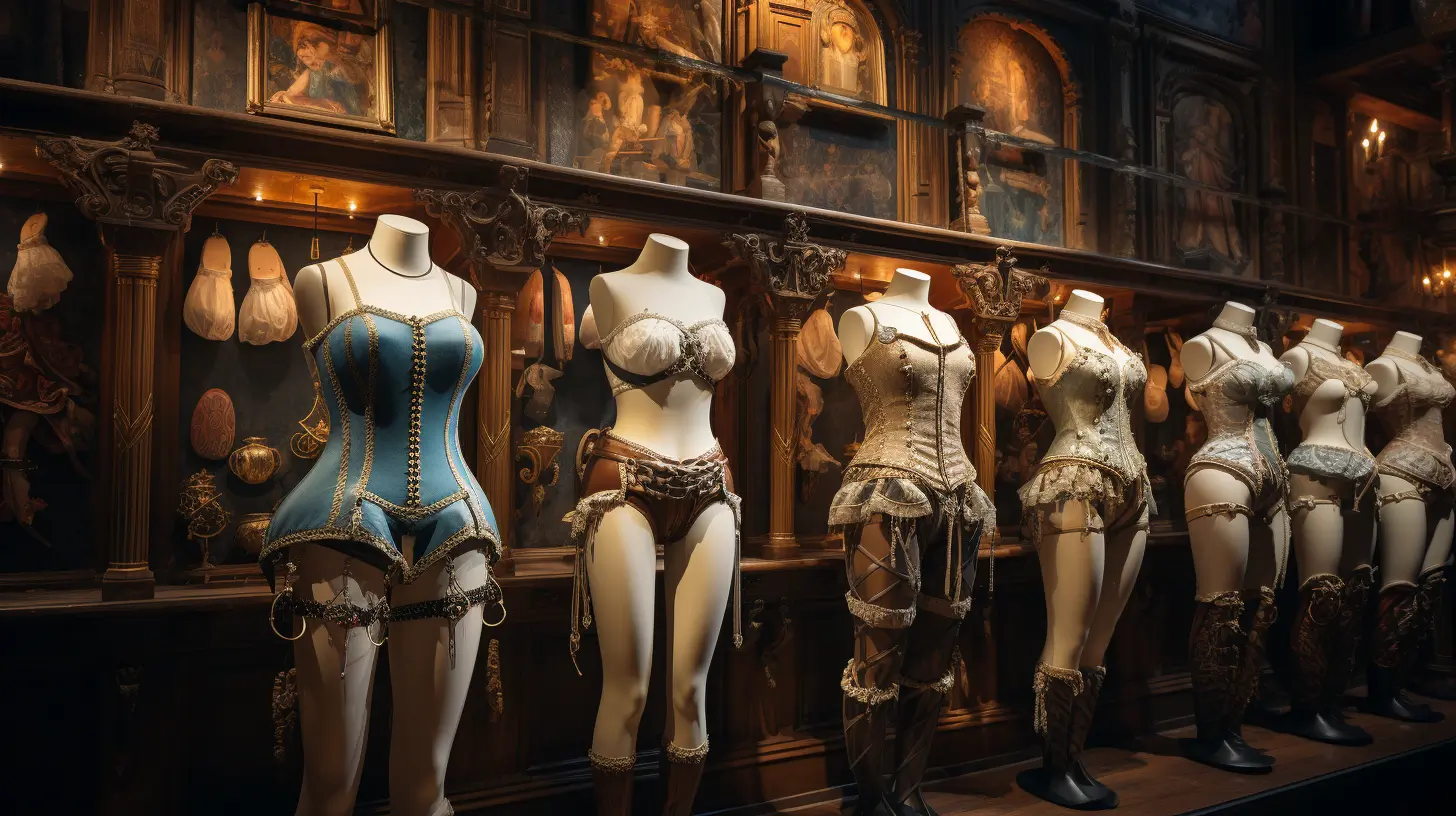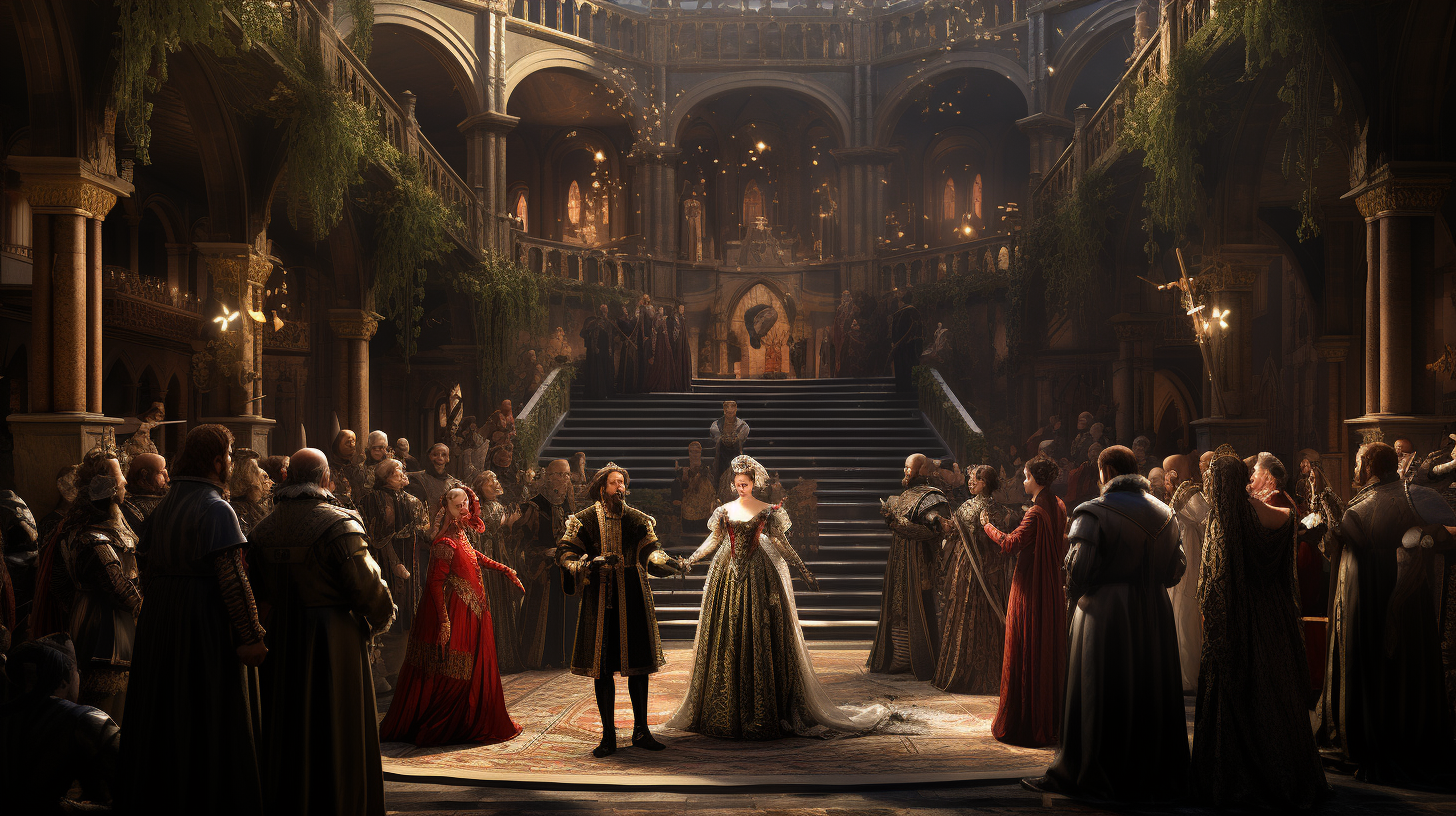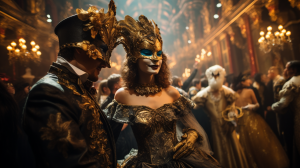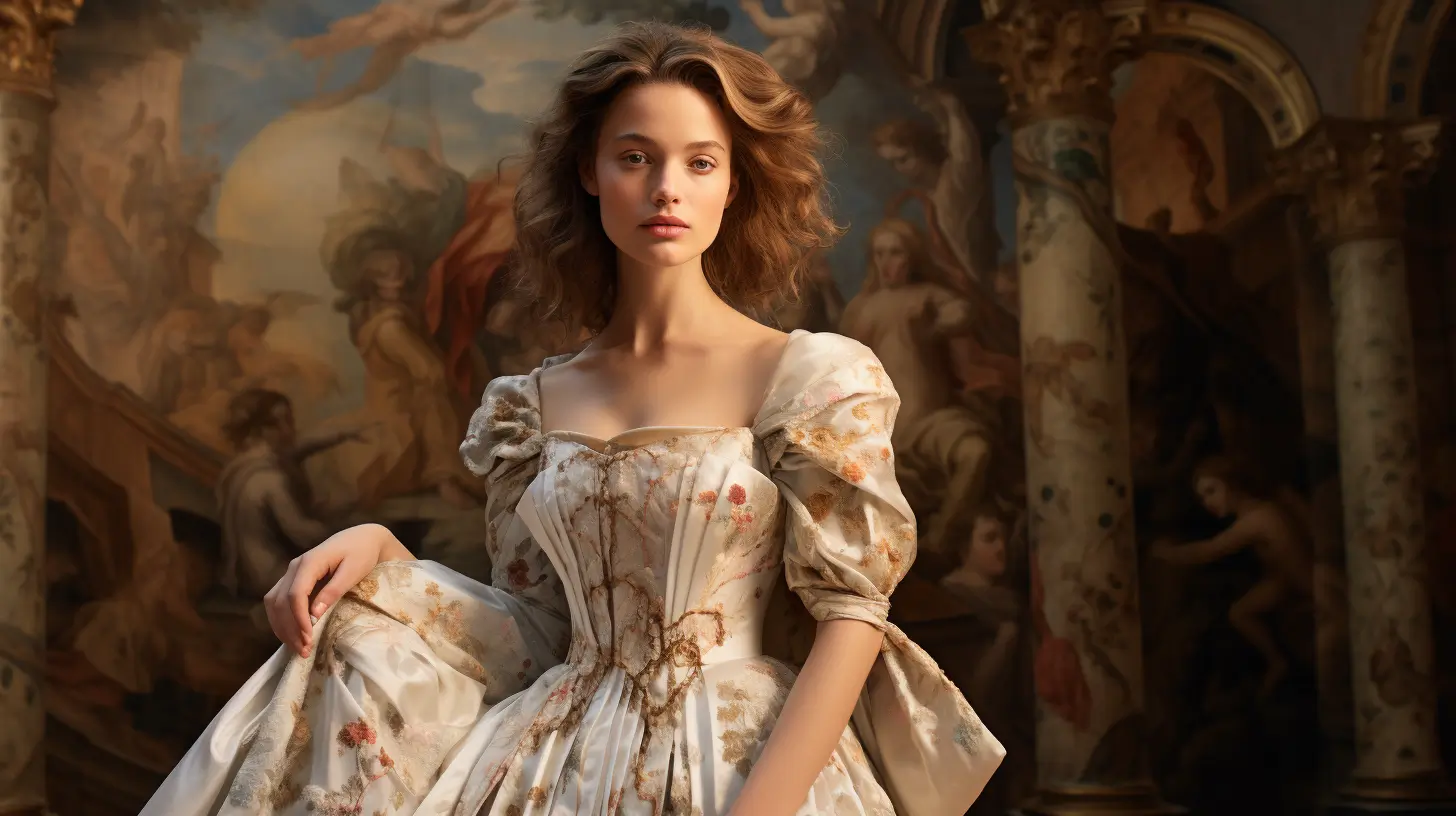
Elegance Reborn: Unveiling the Splendor of Italian Renaissance Fashion
Imagine walking the cobbled streets of Florence in the 1500s, where the air buzzes with the whispers of change, art, and a newfound zest for life. The Italian Renaissance isn’t just a chapter in a dusty history book; it’s a vibrant, palpable era that redefined the world. And at the heart of this cultural whirlwind? Fashion – not just clothes, but statements, declarations of wealth, power, and artistic flair.
This isn’t a tale of mere garments. It’s a saga of opulence, where every stitch tells a story, every color whispers a secret. In the world of Italian Renaissance fashion, extravagance wasn’t just a choice; it was a language, a mode of expression as vivid and intricate as the era’s celebrated frescoes.
We’re diving into a realm where fashion was a playground for the elite, a battleground for societal norms, and a canvas for artistic expression. From the silken gowns of the nobility that flowed like liquid gold to the modest attire of the common folk, every thread weaves into the rich tapestry of history.
Prepare to embark on a journey back in time, where every corner turned unveils another layer of this fascinating era. We’ll unravel the elegance of the aristocrats, the subtler tones of the commoner’s garb, and everything in between. And in this exploration, we’ll find reflections of our own world, echoes of our modern fashion sensibilities that trace back to the vibrant streets of Renaissance Italy.
So, lace up your boots, fasten your doublets, and let’s step into the world of Italian Renaissance fashion – a world where elegance was reborn, and every garment had a story to tell.
The Essence of Italian Renaissance Fashion
Dive into the luxurious world of Italian Renaissance fashion, a realm where each garment tells a story of power, art, and innovation. This era was not just about covering up; it was about making a statement, where each piece of clothing was a brushstroke on the canvas of society.
The Fabric of Society: Picture the rustle of silk and the sheen of velvet as they pass by. These were not mere fabrics; they were symbols of wealth and influence. Silk, a prized possession imported at great expense, whispered of connections and power. Velvet, with its rich texture, was a tactile testament to affluence.
Colors and Patterns in a Social Tapestry: In the world of Renaissance Italy, colors spoke volumes. Rich blues and deep reds were more than mere shades; they were declarations of status. Patterns, whether geometric or floral, served as an unspoken language, a visual dialogue about taste, wealth, and ambition.
Intricate Detailing: The Art of Dress: The detailing in this era was nothing short of extraordinary. Embroidery was a display of skill and patience, a form of storytelling through thread and needle. Lace added a delicate edge to garments, a whisper of grace and sophistication. Every bead, every stitch, was a testament to the era’s relentless pursuit of beauty and craftsmanship.
In this extravagant era, fashion was a daily act of art, a living, breathing piece of a cultural revolution. Every outfit was a masterpiece, every choice a reflection of one’s place in the unfolding narrative of the Renaissance.
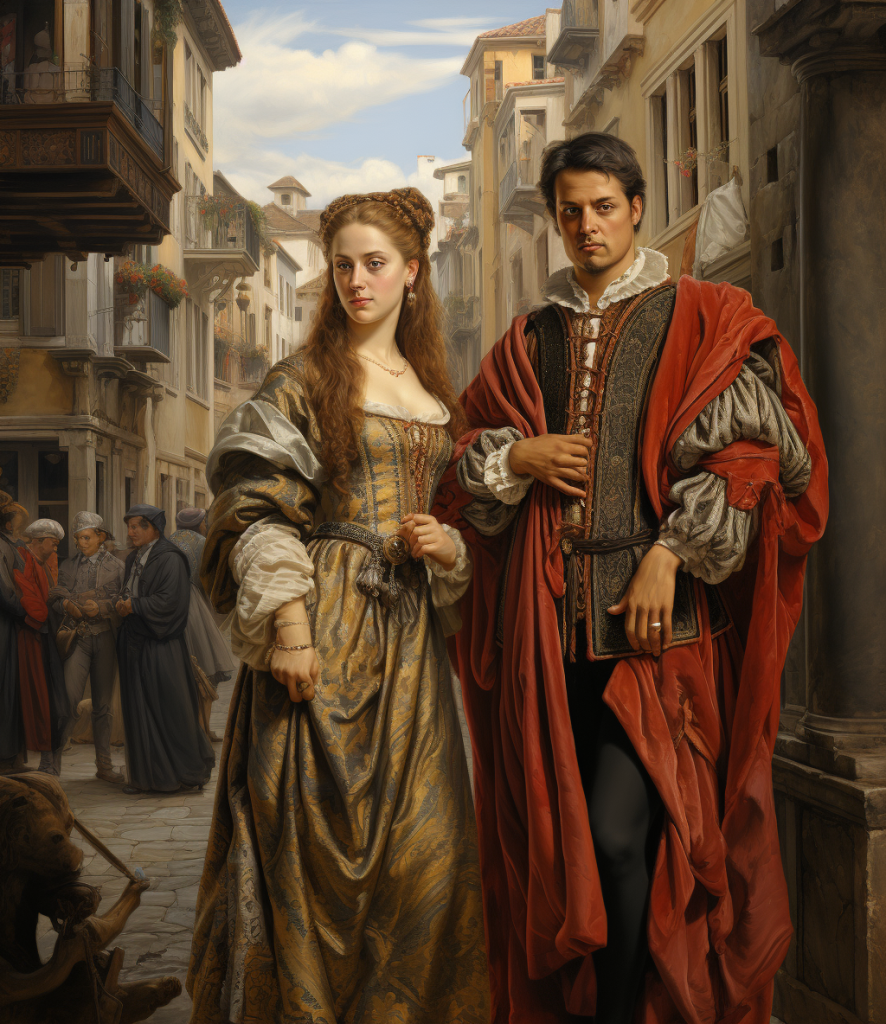
Fashion as a Reflection of Social Hierarchy
In the tapestry of the Italian Renaissance, fashion wasn’t just a matter of personal taste; it was a vivid reflection of the societal ladder. Every stitch, every fabric choice, was a subtle (or sometimes not-so-subtle) nod to one’s place in the grand scheme of things.
Nobility and Opulence: The Fashion of the Aristocrats
For the nobility, fashion was a game of one-upmanship, a dazzling display of wealth and power. Picture gowns that flowed like rivers of gold, doublets stitched with the dreams of artisans. These were not mere clothes; they were statements, each more elaborate than the last, screaming of status. For the elite, dressing was an art form, a daily ritual in showcasing superiority and grace.
The Contrast: Burghers and Commoners
Step away from the palaces and into the streets, and the fashion narrative changes. Here, the attire of the commoners and the emerging middle class – the burghers – speaks of practicality and modesty. But don’t be fooled; even in simplicity, there was a language of fashion. The cut of a tunic, the length of a skirt, all told tales of the wearer’s life and work. In these threads, we see the backbone of the Renaissance, the silent majority who kept the cities alive.
Sumptuary Laws: The Rulebook of Fashion
In a world obsessed with status, fashion became a matter of law. Sumptuary laws were the rulebooks of attire, dictating who could wear what. These laws were more than just dress codes; they were a reflection of the era’s social anxieties, an attempt to maintain the status quo in a rapidly changing world. Breaking these laws wasn’t just a fashion faux pas; it was a rebellion, a crack in the mirror of the societal structure.
In the Italian Renaissance, fashion was a mirror of society, reflecting everything from wealth and power to social anxieties and desires. It was a visible, vibrant part of the era’s ongoing narrative, a story told in silks and velvets, in cuts and colors.
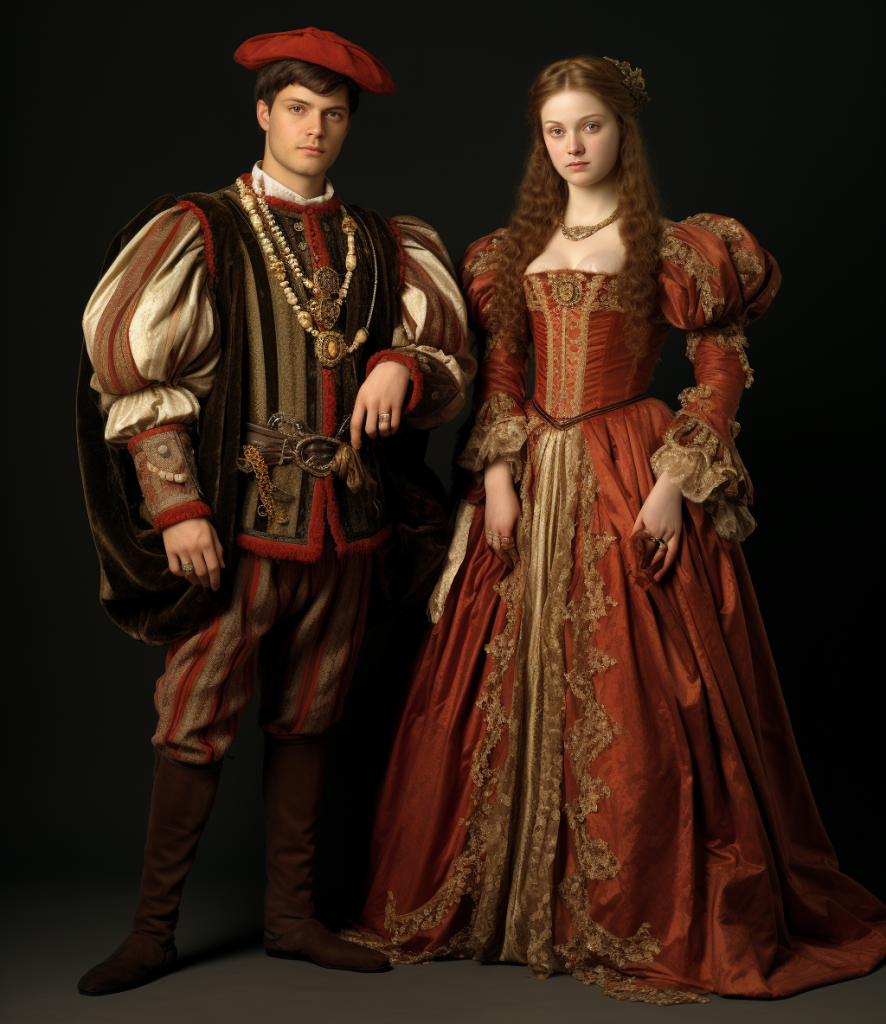
Gender Dynamics in Fashion
In the Italian Renaissance, fashion was not just a reflection of wealth or social standing, but also a vivid expression of gender roles and expectations. The sartorial choices of men and women were not mere personal preferences; they were dictated by societal norms, each stitch a subtle nod to the era’s views on masculinity and femininity.
Women’s Attire: Gowns as Symbols of Grace and Status
For women, fashion was a complex language. Their gowns were not just garments; they were statements of family honor, personal virtue, and social status. Imagine dresses that sculpted the body, accentuating the natural form with an artistry that would make any sculptor envious. The headdresses, often elaborate and always telling, were crowns in their own right, each style speaking volumes about the wearer’s place in society.
Men’s Apparel: The Evolution of Masculine Fashion
Men’s fashion during the Renaissance was an intriguing mix of flamboyance and functionality. The doublet, a snug-fitting jacket, was more than just a piece of clothing; it was a symbol of masculinity, its cut and fit a testament to the ideal male form. Hose, often colorful and tight, were not just practical; they were a display of virility and status. The evolution of men’s fashion in this era was a dance between utility and exhibition, a balancing act between societal expectations and personal expression.
In the Renaissance, fashion was a canvas on which gender norms were painted vividly. Each garment, whether a gown or a doublet, was a piece in the complex puzzle of societal expectations, a tangible expression of the era’s ideals of femininity and masculinity.
Iconic Figures and Their Influence
In the Italian Renaissance, fashion wasn’t just shaped by trends; it was molded by the hands of iconic figures. These were the trendsetters, the influencers of their day, whose sartorial choices echoed through the streets and across the ages.
The Medici Family: Patrons of Elegance
Take the Medici, for instance. This powerhouse family didn’t just bankroll the Renaissance; they dressed it. Their influence in fashion was as profound as their patronage of the arts. Every gown, every doublet worn by a Medici was a statement piece, a trend in the making. They were the embodiment of Renaissance fashion, setting the bar for extravagance and elegance.
Artists as Fashion Icons
Then, there were the artists – the da Vincis, the Michelangelos. These weren’t just painters and sculptors; they were the architects of beauty, both in their art and in their personal style. Their influence extended beyond the canvas, shaping the fashion sensibilities of their time. An artist’s attire was often as scrutinized as their art, each a masterpiece in its own right.
In the Renaissance, these iconic figures were more than just people; they were the embodiment of an era’s aesthetic ideals. Their influence on fashion was profound, shaping not just the styles of their time but leaving an indelible mark on the fabric of history.
Artistic Intersection: Fashion and Renaissance Art
The Italian Renaissance was a symphony of art and fashion, each influencing and enhancing the other. This era, celebrated for its artistic achievements, also witnessed a fusion of fashion with the fine arts, creating a visual feast that continues to captivate us to this day.
Fashion Immortalized in Paintings
Renaissance art wasn’t just about capturing faces and landscapes; it was also about immortalizing the fashion of the era. The paintings of this time are a treasure trove of historical fashion, offering us glimpses into the styles and trends that defined the era. Artists like Botticelli and Titian didn’t just paint people; they painted silks, velvets, and brocades, meticulously capturing the elegance and opulence of Renaissance attire.
Influence of Art on Fashion Trends
Art and fashion were in a constant dance, each influencing the other. The flowing robes in a Raphael painting, the intricate lace in a portrait by Leonardo da Vinci – these were not just artistic choices; they were fashion statements. The artists of the Renaissance were trendsetters, their canvases a preview of the styles that would soon sweep through the streets of Italy.
In the Renaissance, art and fashion were two sides of the same coin, each reflecting and shaping the other. This era’s legacy is not just in its paintings and sculptures, but also in the fashion trends that those artworks immortalized and inspired.
The Legacy of Italian Renaissance Fashion in Modern Times
As we step out of the gilded frames of the Renaissance and into the modern world, the echoes of its fashion still resonate around us. The legacy of Italian Renaissance fashion is not confined to history books; it lives on, breathing inspiration into modern design and culture.
Influence on Modern Fashion Design
Today’s fashion designers frequently dip their brushes into the rich palette of the Renaissance. The opulent fabrics, the intricate detailing, the bold use of color and pattern – these elements find their way into modern runways, infusing contemporary designs with a touch of historical grandeur. Renaissance fashion speaks of a time when clothing was about more than utility; it was about artistry, and this philosophy continues to inspire designers today.
Renaissance-Inspired Trends in Contemporary Fashion
The influence of Renaissance fashion can be seen in the resurgence of corseted silhouettes, puffed sleeves, and ornate embroidery in modern apparel. These nods to the past are not mere imitations; they are reinterpretations, blending historical elements with contemporary sensibilities. The Renaissance taught us that fashion could be a form of expression, a canvas for creativity, and this lesson remains relevant in the fashion world today.
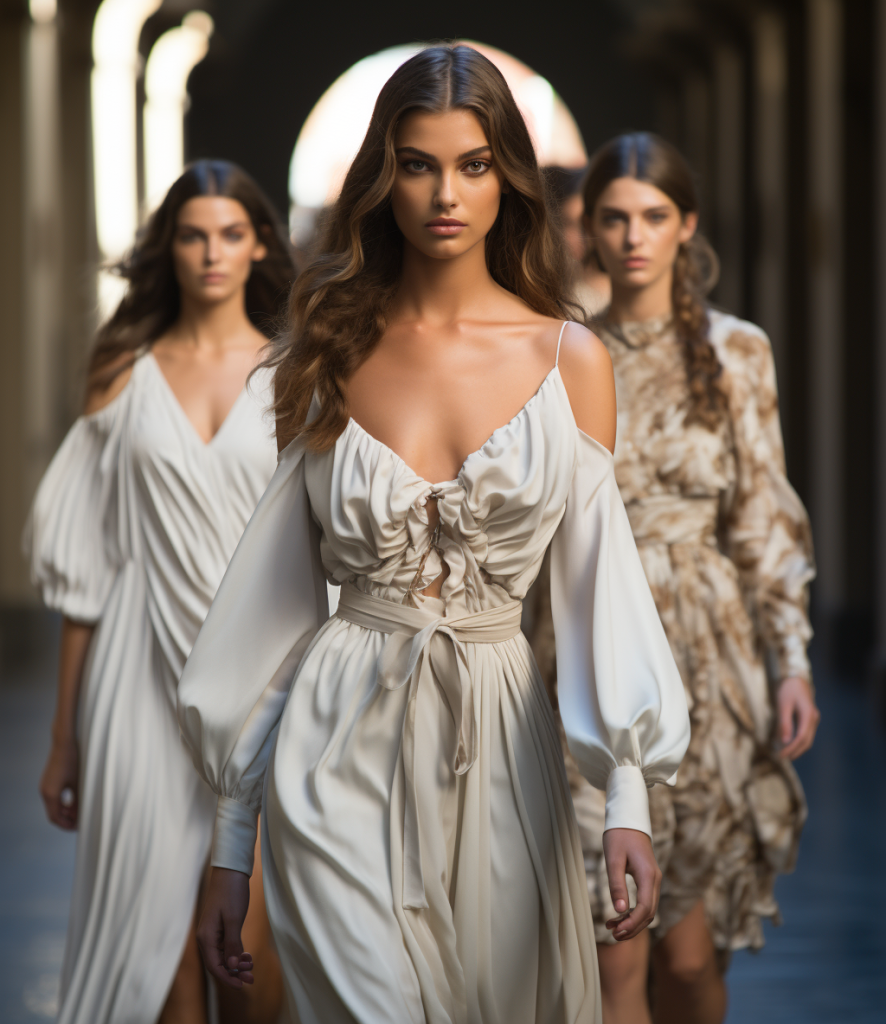
As we draw the curtains on our journey through the luxurious and intricate world of Italian Renaissance fashion, we’re left with a profound appreciation of how deeply this era has woven its threads into the fabric of modern style.
A Timeless Tapestry of Style
The Italian Renaissance was more than a period of artistic and cultural rebirth; it was a revolution in fashion, a time when dressing became an art form. The elegance, the opulence, and the sheer creativity of this era’s fashion were not fleeting trends; they were the birth of a style narrative that continues to influence us today.
The Enduring Impact of Renaissance Fashion
The legacy of Italian Renaissance fashion is a story of enduring beauty and innovation. It reminds us that fashion is not just about clothing; it’s about expression, identity, and artistry. The Renaissance’s influence stretches beyond its time, inspiring modern designers and fashion enthusiasts to look back in order to move forward.
Fashion as a Historical Mirror
Our exploration of Italian Renaissance fashion is also a reminder of how fashion reflects the society and times it arises from. The intricate gowns, the structured doublets – they were not just about aesthetics; they were mirrors of societal norms, expressions of personal status, and symbols of cultural values.
In closing, the Italian Renaissance teaches us that fashion is a powerful language, a form of communication that transcends time and place. It’s a language that speaks of beauty, power, and societal change, a language that continues to resonate in every stitch of modern fashion. As we embrace the future of fashion, let’s not forget the opulent lessons from our Renaissance past.


